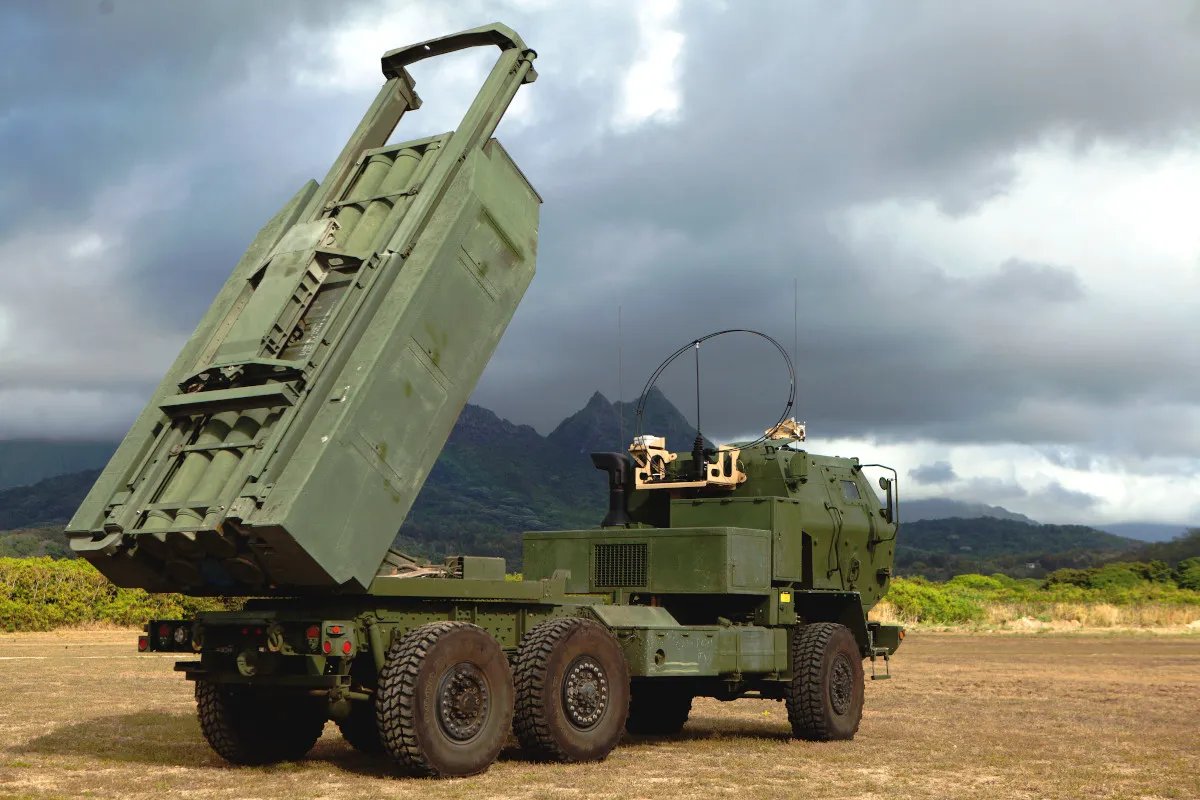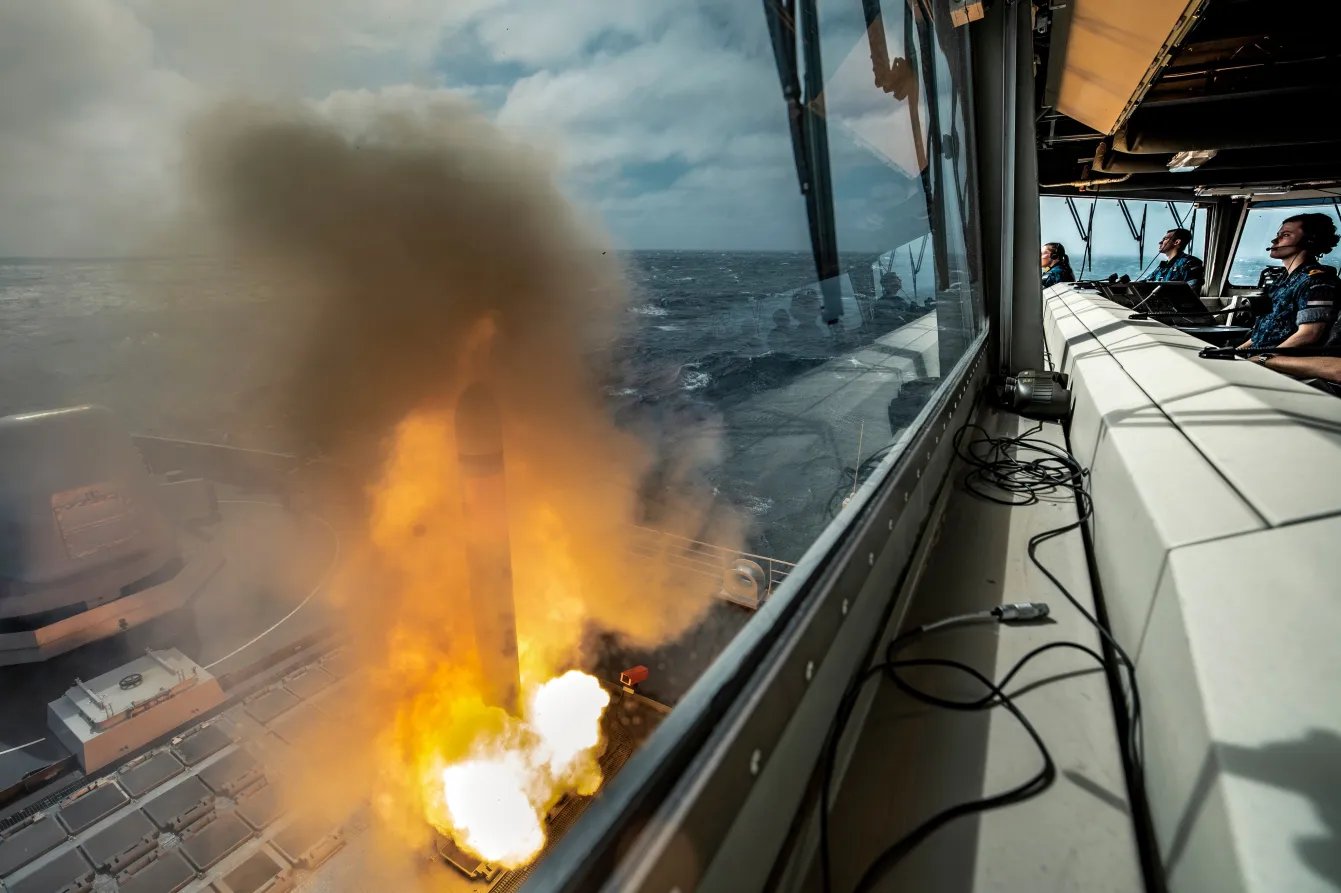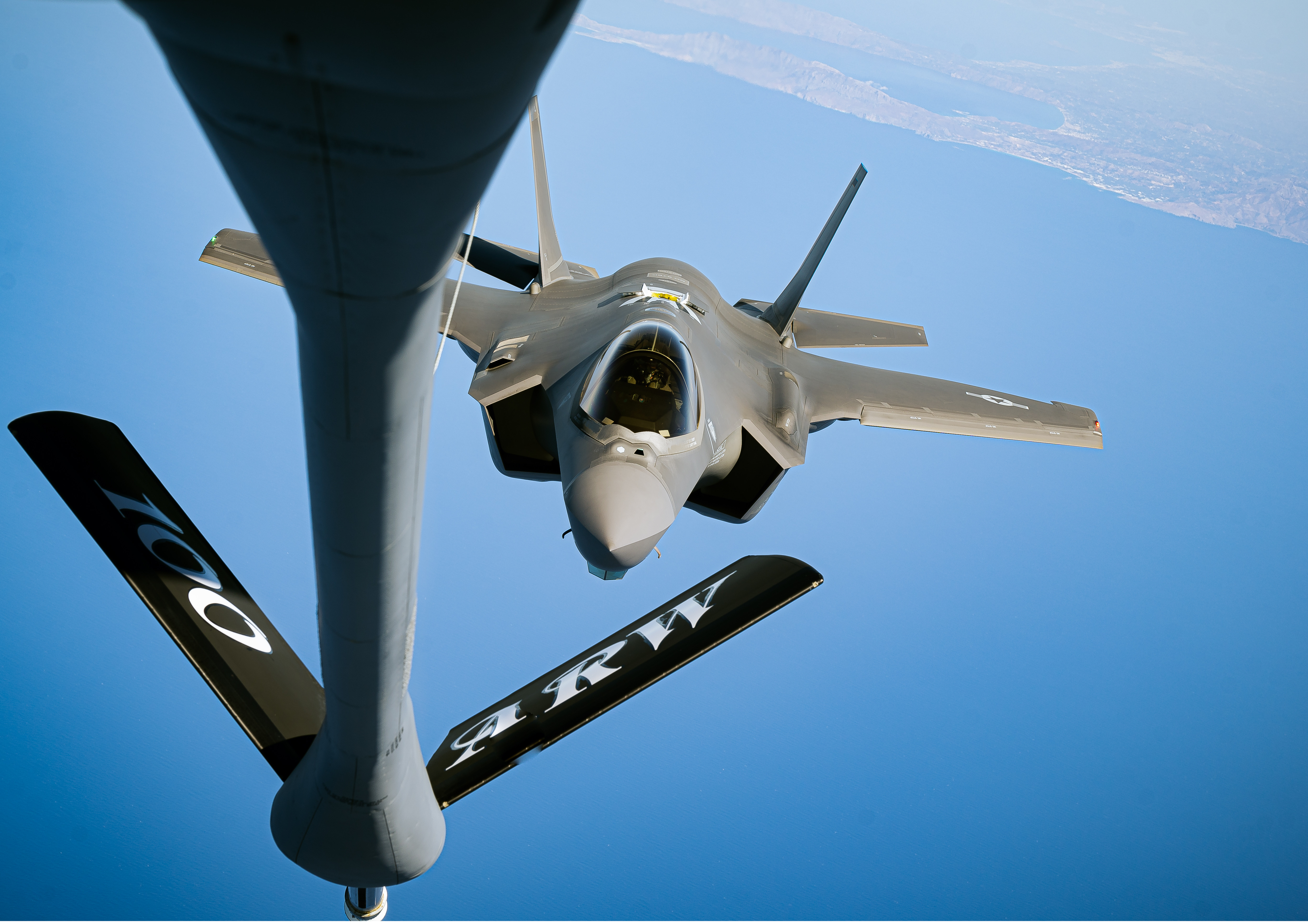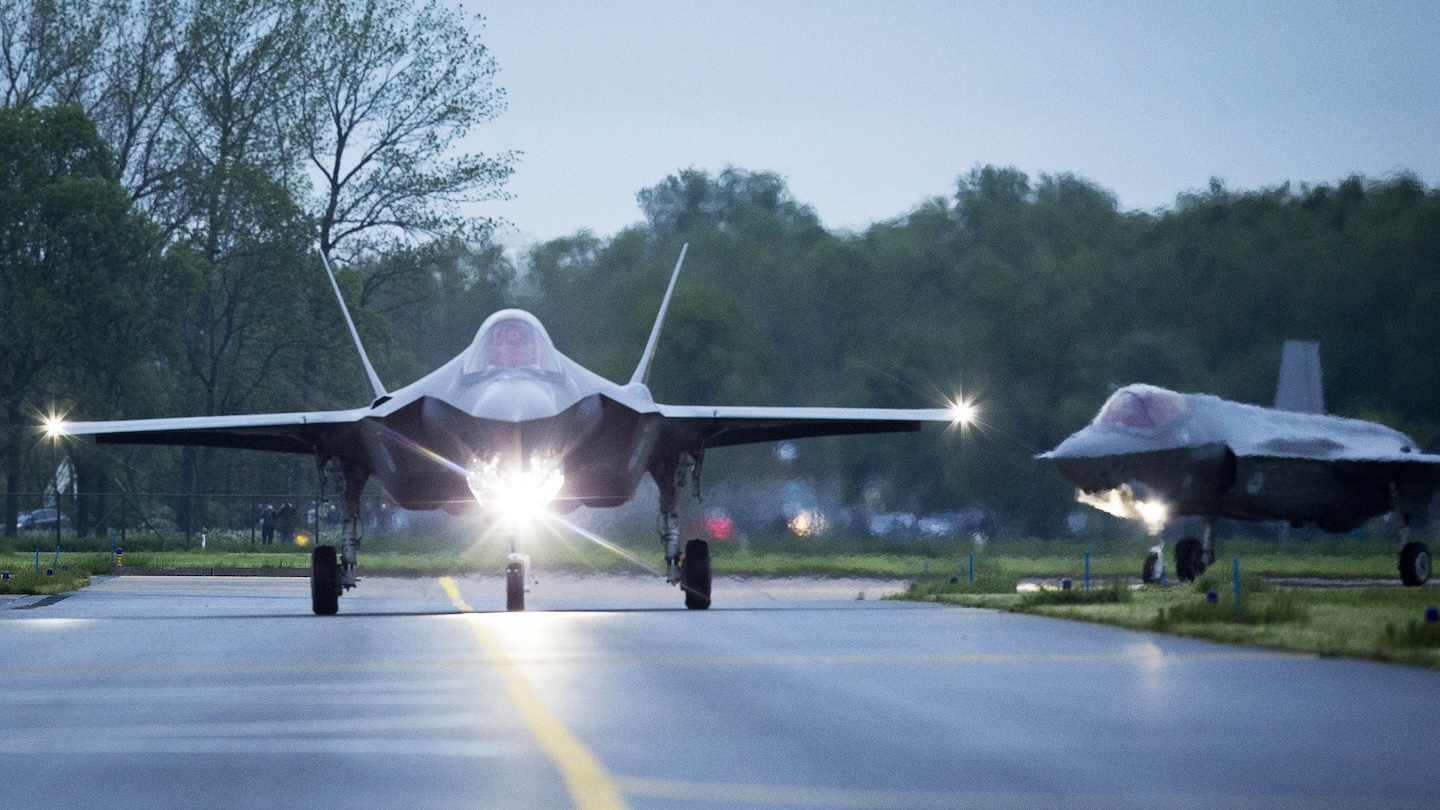Dutch F-35 stealth fighters have, for the first time in Europe, used a data exchange system to transmit targeting coordinates to rocket artillery. The system, developed by Lockheed Martin and known as Keystone, doesn’t appear to have previously been reported, at least under this name.
While we have reached out to Lockheed Martin for more information, the details that have surfaced so far were published by the Dutch Ministry of Defense.
During the course of NATO’s recent Ramstein Flag large-scale exercise, which was run out of Leeuwarden Air Base in the Netherlands, a Royal Netherlands Air Force F-35A found and identified an undisclosed target on the ground. “The aircraft then sent the information to the Keystone system. That automatically transmitted it to a land force unit, which then took out the target via the PULS missile artillery system.”
While the F-35 is a very familiar asset, with the Dutch being very much at the forefront of the stealth jet’s operations and expanding capabilities, the PULS is less well-known.
The Israeli-made PULS (Precise and Universal Launch System) was acquired by the Netherlands to extend the striking reach of its ground forces and was selected in favor of the U.S.-made High Mobility Artillery Rocket System (HIMARS).
At the time, the Dutch Ministry of Defense said that PULS was chosen since it can carry more rockets, better fits within the country’s budget, and will likely be more suitable for European-made ammunition.

Manufacturer Elbit Systems describes the launcher for PULS as an ‘autonomous’ artillery rocket system that can fire a variety of munitions. The company explains that PULS comes with two ‘pods’ that are each designed for specific payload types with varying ranges, including the farthest-reaching Predator Hawk, a tactical ballistic missile with a range of up to 186 miles. Among rocket options, the furthest range is offered by the EXTRA, which can hit targets at 93 miles. Elbit says that this flexibility will prevent artillery units from having to move positions based on the firing range required for the mission, though the system is vehicle-based and designed to be highly-mobile.
It’s unclear exactly what types of rockets were fired from PULS during Ramstein Flag, but the Dutch Ministry of Defense has confirmed that this was the first instance that Keystone was used to exchange live data from an F-35 outside the United States.
“This process took only a few minutes, from finding the target to firing the missiles,” the ministry added. “The test was conducted with help from the U.S. Air Force, F-35 manufacturer Lockheed Martin, and TNO [the Netherlands Organization for Applied Scientific Research].”

The Royal Netherlands Air Force has been using the Keystone system since last year, the Dutch Ministry of Defense added.
While the use of Keystone in Europe is new, using F-35s to provide targeting information to ground artillery units isn’t new.
As long ago as 2019, TWZ reported on how U.S. Army ground artillery units equipped with M109 self-propelled 155mm howitzers destroyed a mock air defense system after getting targeting information from a U.S. Air Force F-35.
A year before that, U.S. Marine Corps F-35Bs were testing their ability to feed targeting data to the service’s High Mobility Artillery Rocket System (HIMARS).

While it’s not clear what mock target was destroyed in the Ramstein Flag exercise, likely candidates would include ground-based air defenses, along with vehicle and troop concentrations, artillery systems, and more. When it comes to air defenses, removing these kinds of threats by “kicking down the door” is a prerequisite to establishing air superiority over the battlefield, and the F-35 is an ideal asset for these kinds of destruction of air defense (DEAD) missions.
In its own description of the F-35’s core roles for the service, the Royal Netherlands Air Force highlights non-traditional intelligence, surveillance, and reconnaissance (NTISR), which it describes as “gathering intelligence, monitoring an area and conducting reconnaissance missions — using its own sensors,” and “sharing this information and intelligence with its own troops on the ground.”

For some time now, it’s been clear that the concept of operations could be extremely valuable for U.S. forces and their allies. This is especially the case in a future large-scale conflict against an opponent with a dense integrated air defense network. At the same time, while the F-35 provides a unique capability for acquiring targets, thanks to its extensive sensor suite, the same concept can be expanded to include a variety of other assets, including drones, different types of long-range artillery, and tactical missile systems.
With the F-35 able to hoover up a prodigious amount of electronic signals data and with the ability to spot, categorize, and geolocate various emitters, including radars associated with air defense and artillery systems and communications nodes, the jet is very well placed for producing targeting coordinates. As well as this kind of electronic intelligence, further imagery and other data can be furnished by the F-35’s AN/APG-81 radar, Electro-Optical Targeting System (EOTS), and AN/AAQ-37 Distributed Aperture System. These last three sensors are also inline for significant upgrades, as you can read about in these past stories.

Whatever the source of that targeting information, it can be distributed to other aircraft, ground units, or command centers in rear areas. At this stage, the most appropriate strike asset can be tasked to eliminate the threat.
A modern rocket artillery system like PULS, equipped with a computerized targeting system and able to fire GPS-assisted and other guided munitions, can make good use of F-35-provided data, especially in terms of geolocation information, and then rapidly target the threat.
In general, these kinds of concepts of operations can get the best out of a diverse collection of weapons.
Increasing the reach of its striking potential is currently very much at the forefront of the Dutch Armed Forces, as it builds a wider portfolio of long-range weapons acquired primarily in response to Russia’s full-scale invasion of Ukraine. In a future conflict with Russia, finding the targets in real time would be of the highest importance. Having F-35s flying near or beyond the front, in a ‘quarterback’ role, would be one way of acquiring real-time, actionable targets for long-range fires units that can strike rapidly.
As well as PULS, other long-range strike weapons that the Netherlands is in the process of acquiring include AGM-158B Joint Air-to-Surface Standoff Missile-Extended Range, or JASSM-ER, for its F-35s. JASSM-ER can strike well-defended targets at a range of around 600 miles.
Meanwhile, the Royal Dutch Navy is introducing Tomahawk cruise missiles, with a range of more than 600 miles. You can read more about this ongoing effort here. Dutch F-35s could potentially use the same kind of targeting tactics in combination with Tomahawk attacks, too.

In the case of PULS, in particular, and with ground artillery more generally, these kinds of systems also offer the F-35 the huge benefit of an enormous ‘magazine depth,’ allowing multiple targets to be attacked, while the aircraft itself might only be able to prosecute a handful. This is especially the case if the fighter is carrying only internal ordnance, which would be required to preserve its low-observable qualities.
As TWZ has written before, in the context of F-35s working alongside ground artillery:
“The aircraft could also stay on station after they’ve expended all of their own bombs and missiles and continue to destroy targets with an effectively unlimited magazine, albeit indirectly. Army artillery units down below also have the benefits of being highly flexible and able to rapidly shift focus from one target area to another, so long as it is within their range, and can operate in poor weather that might ground aircraft or otherwise limit their ability to respond.”
Overall, the Dutch demonstration at Ramstein Flag emphasizes the growing importance placed on long-range ‘kill chain,’ something that the U.S. military sees as critical to taking on China over the vast distances that would be involved in a future Indo-Pacific war with China. However, the same kinds of tactics are just as applicable in Europe, especially when facing a resurgent Russian military.

While it remains unclear precisely how the Keystone system works, in terms of networks and datalinks, as well as its operational status at this point, we hope to learn more about what it can offer soon.
In the meantime, a Dutch F-35 calling in a rocket artillery strike on a ground target is another important demonstration of the aircraft’s evolving capabilities. The F-35 is likely to become an even more critical asset within these kinds of kill chains as the Netherlands continues to expand its long-range strike capabilities, against targets on land and potentially also at sea.
Contact the author: thomas@thewarzone.com
